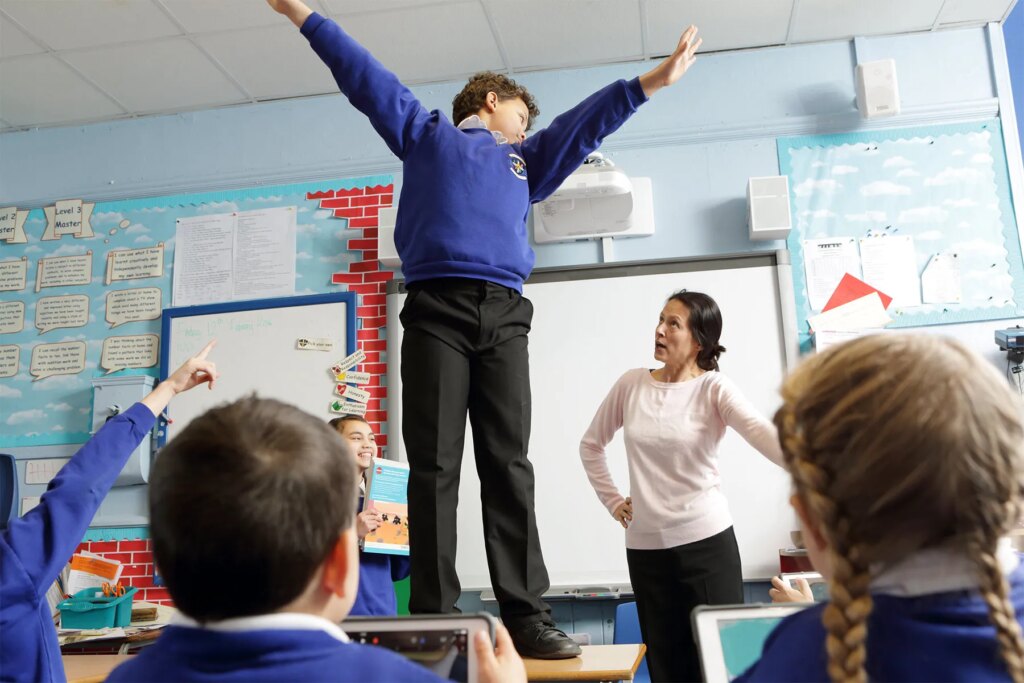Aug. 2, 2023 – It’s a story as old as teaching. Young children staring off into space during class, seemingly oblivious to the lesson and any anything else happening around them.
But Sara-Rivka Bass, an elementary teacher in Brooklyn, has found that many children who don’t seem to be paying attention actually absorb more information than they would appear to be.
“I allow the children in my class to use a fidget spinner because it actually helps some kids to pay attention,” she said. “If I see that their work is suffering, it means they’re using it as a toy instead of an attention-enhancing tool, and they’re paying attention to the spinner, so I’ll take it away.”
But in many kids, the spinner actually helps the kids to focus on the lesson material.
“As an instructor, I know that there can be many kids who seem to be paying attention and can be staring at my face during the lesson, but aren’t absorbing or retaining any of that information,” Bass said. “Other kids focus better when they’re also doing something else at the same time.”
Children’s Brains
Now there is research to suggest Bass may be correct. A new study shows that children’s apparent inability to pay attention may actually allow them to outperform adults and retain information that they were told to discard in ways that adults can’t.
Investigators studied 24 adults — average age of 23 — and 26 children ranging from 7 to 9. Each was asked to observe a series of four illustrations: a bumblebee, a car, a chair, and a tree. The images were accompanied by a background of dots moving either up, down, left, or right.
Each person did this while inside a magnetic resonance imaging machine, and as they watched, their brain activity was measured to show which areas of the brain were most involved.
At one point in the study, participants were told to ignore the moving dots and to press a button when one of the four objects appeared more than once. In another phase, they were asked to ignore the objects and to press a button when the dots were moving in the same direction more than once.
When the researchers compared the accuracy of the children and the adults in both tasks, they found that the brains of the adults showed enhanced activity for the information they were asked to focus on.
The children’s brains, on the other hand, represented both what they were asked to prioritize and what they were asked to ignore. In other words, they were able to decode both sets of information at the same time.
In particular, the researchers found that adults had high accuracy for focusing just on what they were supposed to. But the children were able to decode both equally well.
“This somewhat surprising result shows that attention works differently in children’s brains, likely allowing children to learn about facts that are not immediately relevant to a task,” said senior author Amy Finn, PhD, associate professor at the University of Toronto.
“The present data indicate that, compared with adults, children are sensitive to more information in the environment, beyond their immediate goals, and such sensitivity can be helpful when children need to learn about multiple aspects of our information-rich world at once, or when their goals change,” the authors write.
Lead author Yaelan Jung, PhD, who worked on the study as a graduate student at the University of Toronto and is now a postdoctoral researcher at Emory University in Atlanta, elaborated in a press release. “Although it’s not a foreign idea that children have poorer attention abilities than adults, we did not know how this poor attention would impact the way their brains receive and hold other information,” she said.
“Our study fills this knowledge gap and shows that children’s poor attention leads them to hold more information from the world than adults,” Jung stated.
Developing an Instinct for Who’s Really Paying Attention
Finn says that the study doesn’t have any “direct implications” for children with ADHD who were not the focus of the researchers’ investigation.
But Bass says she notices that having a second activity to engage in — such as doodling or playing with a spinner — can be beneficial in enhancing attention in kids with ADHD.
Bass is very familiar with ADHD with because she herself had it as a child and continues to have challenges paying attention even in adulthood. She noted that sometimes, an extremely interesting topic that grabs a child’s attention can lead to the child being hyper-focused on it and not needing another activity at the same time in order to pay attention. But many lessons at school don’t have that type of magnetic appeal for youngsters and for them, a “mindless activity” can enhance their ability to pay attention.
Talya Roth teaches “twice-exceptional” fourth and fifth graders who have both ADHD and autism. Roth has also found that giving students a spinner or allowing them to draw during lessons doesn’t detract from their ability to attend to the lesson material and may even enhance it.
“I’ve literally had students at the end of the day who could no longer sit in chairs and were doing handstands,” she said. “I would be teaching my regular class and asking questions and they would stop moving and would give me a thoughtful answer, not just ‘yes’ or ‘no,’ making it clear that they were paying attention and absorbing the information.”
Roth, who’s based in New York, encourages parents and teachers to recognize that attention in children is complex and even a seemingly inattentive child may actually be paying attention.
Bass adds that a lot of intuition and discretion are required for teachers to recognize when a child is engaging with the material and when they child actually is more focused on the external activity, such as the spinner. “But you develop an instinct,” she said.

